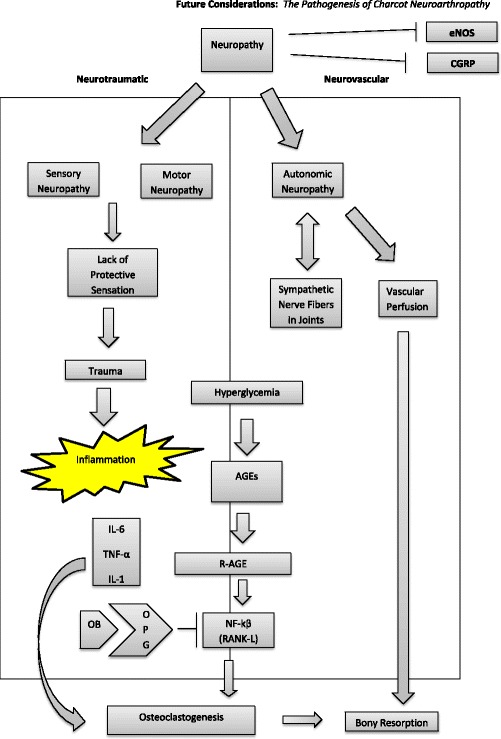Fig. 4.

The pathogenesis of CN is multifactorial and not entirely determined. Neuropathy, inflammation, and hyperglycemia all play major roles in CN development and progression. Peripheral neuropathy includes sensory, motor, autonomic, and neurogenic peptide dysregulation [52]. As a result; the patient does not necessarily perceive traumatic events that could lead to areas of increase pressure and potential sites of breakdown [53]. This perpetuates the inflammatory cycle, leading to a vicious cycle that intimately affects bony turnover [54]. The bony turnover is also regulated by hyperglycemia which is shown to increase advanced glycation end products (AGEs). AGEs lead to an increase in receptor for AGEs (RAGE). The increase in RAGE leads to an increase in RANK-L which promotes osteoclastogenesis [55]. Finally, newer evidence demonstrates the Charcot neuroarthropathic joint itself is lacking sympathetic control and may allow for increase perfusion to the area [32]. This may also disturb the bony turnover ratio leading to weakened demineralized bone
